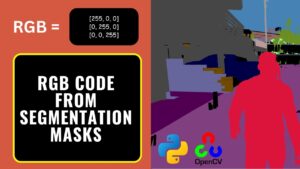Deep learning is a subset of machine learning that utilizes neural networks with multiple layers to analyze and identify patterns in data. One of the key components of deep learning is the activation function, which is responsible for determining the output of each neuron in the network. In this blog post, we will explore the basics of activation functions and their role in deep learning.
What is an Activation Function?
An activation function is a mathematical function that is applied to the input of a neuron to determine its output. The output, also known as the activation, is then passed to the next layer in the network. Activation functions are used to introduce non-linearity into the neural network, allowing it to learn and model more complex patterns in the data.
Read More
- Why Deep Learning is not Artificial General Intelligence (AGI)
- What is Transfer Learning? – A Simple Introduction.
Purpose of Activation Functions
Activation functions are used in deep learning to introduce non-linearity into a neural network. In a neural network, each neuron receives input from other neurons, performs some mathematical operation on that input, and then passes the output to other neurons. The activation function is used to determine the output of a neuron.
Without an activation function, the output of a neuron would simply be a linear combination of the input. This would result in a neural network that is only capable of performing linear operations, which would limit its ability to learn complex patterns and relationships in data. By introducing non-linearity through an activation function, a neural network can learn much more complex patterns and relationships in data.
Types of Activation Functions
There are several types of activation functions that are commonly used in deep learning, each with its own unique properties. Some of the most popular activation functions include:
- Sigmoid: The sigmoid activation function is used to produce a probability-like output between 0 and 1. It is commonly used in the output layer of a neural network when the network is used for binary classification.
- ReLU (Rectified Linear Unit): The ReLU activation function is used to introduce non-linearity into a neural network. It is defined as f(x) = max(0, x) and produces an output that is either 0 or the input value.
- Tanh (Hyperbolic Tangent): The tanh activation function is similar to the sigmoid activation function, but its output range is between -1 and 1. This makes it useful for classification problems where the output is not binary.
- Softmax: The softmax activation function is used to produce a probability-like output that sums to 1. It is commonly used in the output layer of a neural network when the network is used for multi-class classification.
Choosing the Right Activation Function
The choice of activation function can have a significant impact on the performance of a deep learning network. Some factors to consider when choosing an activation function include:
- The type of data you are working with: If the data is binary, a sigmoid function may be a good choice, while if the data is continuous, a ReLU function may be more appropriate.
- The complexity of the problem: For more complex problems, a tanh or Leaky ReLU function may be necessary to capture the nuances of the data.
- The number of layers in the network: The deeper the network, the more important it is to use an activation function that can handle the increased complexity.
Conclusion
Activation functions are a crucial component of deep learning and play a key role in determining the output of each neuron in the network. The choice of activation function can have a significant impact on the performance of the network, so it is important to choose the right one for the task at hand. With the knowledge of the basics of activation functions and their role in deep learning, we can now apply the same to our neural network for better results.





